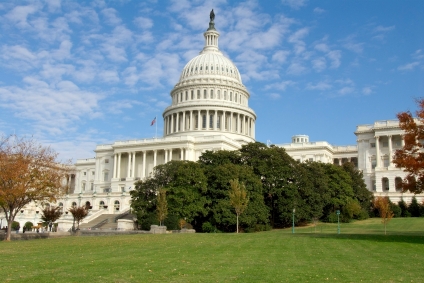Auto Enrollment Guidance Issued
An IRS news release explains the regulations provide answers for employers that will allow them to use these new automatic enrollment features next year and employers may rely on the proposed rules pending the issuance of final regulations.
The proposed regulations address issues raised by provisions of the Pension Protection Act (PPA), including the special nondiscrimination safe harbor for certain qualified automatic contribution arrangements (QACA) and the ability of an employee who has been automatically enrolled under an eligible automatic contribution arrangement to opt out of the arrangement and instead request a distribution of the contributions made during the first 90 days of the arrangement.
Each eligible employee under a QACA must receive a safe harbor notice within a reasonable period before each plan year, the document said. The proposed regulations reflect the requirements for content and timing of the notice and point out the requirements cannot be satisfied by reference to the plan’s summary plan description.
According to the guidance, in order to be a QACA, the plan must provide a specified schedule of automatic contributions (called qualified percentages) for each eligible employee beginning with an initial minimum qualified percentage of 3% of compensation. This minimum qualified percentage begins when the employee first participates in the automatic contribution arrangement that is intended to be a QACA and ends on the last day of the following plan year – as long as two full plan years. After this initial period, the minimum qualified percentage increases by 1% for each of the next three plan years, up to 6%.
The IRS said a QACA can provide for higher percentages, but can at no time exceed 10% of compensation.
Distribution Changes
In order to further facilitate automatic enrollment, the PPA provides limited relief from the distribution restrictions. According to the guidance, an employee can be permitted to elect to receive a distribution equal to the amount of default elective contributions (and attributable earnings) made before the effective date of the election.
Default elective contributions distributed are not taken into account in the ADP test or ACP test.
The PPA also provides for several notices relating to automatic contribution arrangements that have similar content and timing requirements, including the notices required by sections 404(c)(5)(B) and 514(e)(3) of the Employee Retirement Income Security Act (ERISA). The IRS, in coordination with the Department of Labor, anticipates that a single document can satisfy all of these notice requirements, so long as it has all of the requisite information for plan participants and satisfies the timing requirements for each of those notices.
Additionally, among other things, the proposed regulations reflect the substitution of six months for 2세 months as the time period under section 4979(f) by which excess contributions or excess aggregate contributions must be distributed to avoid the excise tax under section 4979(a). Further, the proposed regulations reflect the elimination of the requirement that distributions of excess contributions or excess aggregate contributions include attributable earnings for the period after the end of the plan year (gap period income).
The proposed regulations also reflect the change in the tax treatment of a distribution of excess contributions or excess aggregate contributions. Distributions of excess contributions or excess aggregate contributions (including earnings) are includible in the participant’s gross income for the year of the distribution without regard to the amount of the distribution.
All of these changes are proposed to be effective January 1, 2008 and will impact corrective distributions made in 2009, the IRS said.
Written or electronic comments and requests for a public hearing must be received by February 6, 2008. The guidance provides the methods available for submitting comments or requests.
The guidance is available here. http://www.treas.gov/press/releases/reports/reg13330007(checked)(checked)%20(2).pdf
You Might Also Like:
« New Fidelity Funds Broaden Domestic and International Offerings
